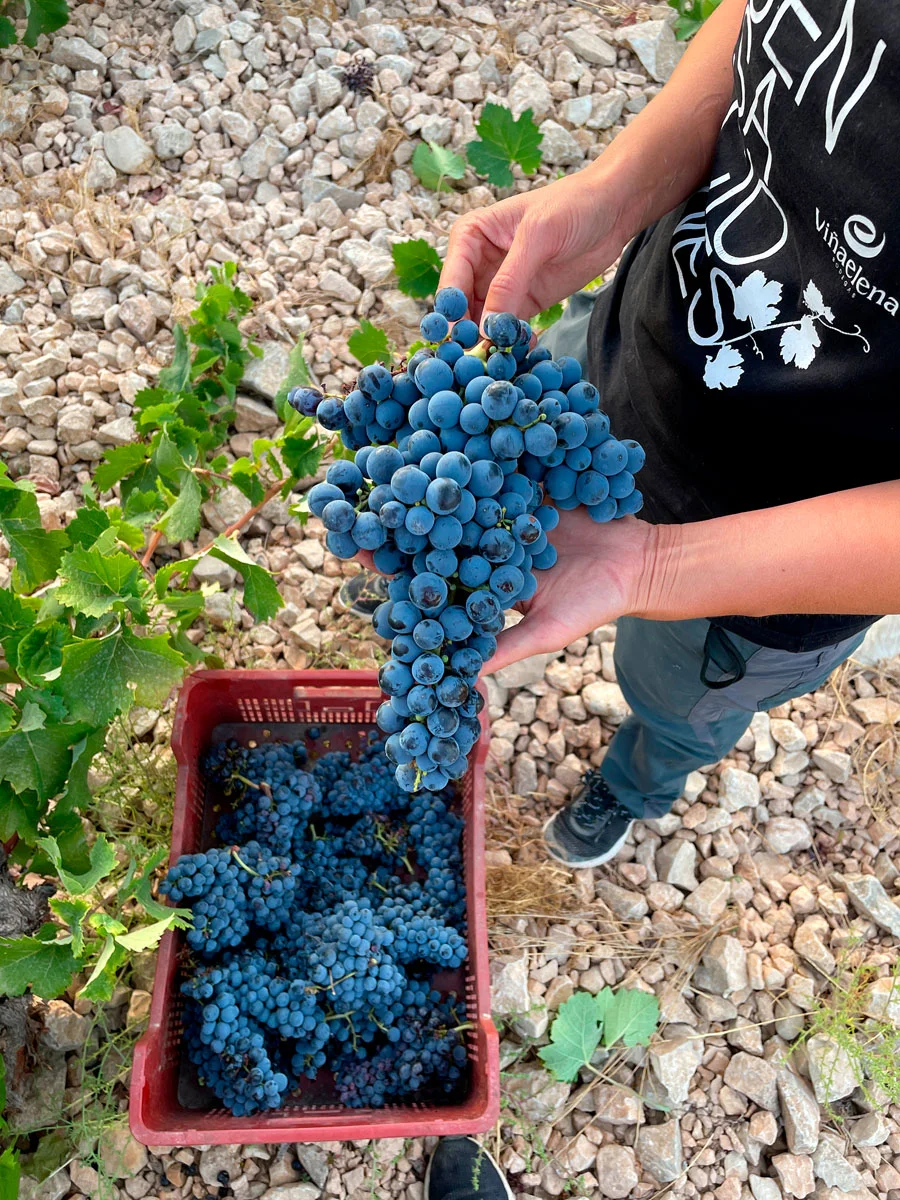Monastrell is a wine grape variety that has carved its niche in the sun-drenched vineyards across the globe.
Predominantly known for its strong presence in Spain, this variety also holds significant sway in regions like France, Australia, and the United States.
The journey of monastrell from an obscure Mediterranean grape to a cornerstone of many iconic red wines is a tale of resilience, adaptation, and flavor.
Meaning of the word “Monastrell”
This is because the grape variety was widely cultivated by monks in the Mediterranean region during the Middle Ages.
The grape is also known as Mourvèdre in France, which is a derivation of the Spanish town Murviedro, where the grape was thought to have been first brought to France.
The origins of monastrell, shrouded in antiquity, lead back to the Mediterranean coast.
Historical records suggest that the grape likely originated in Spain, though some theories argue a possible Eastern Mediterranean lineage.
From these beginnings, monastrell spread across the neighboring regions, each adopting the grape and integrating it into their viticultural practices.
In Spain monastrell has been a staple since at least the 16th century. This lengthy history is evident in the generations of vineyards planted throughout areas like Valencia, Murcia, and Jumilla.
The adaptability of monastrell to hot, arid climates helped it thrive on the Iberian Peninsula, making it a vital player in the development of local wine cultures.
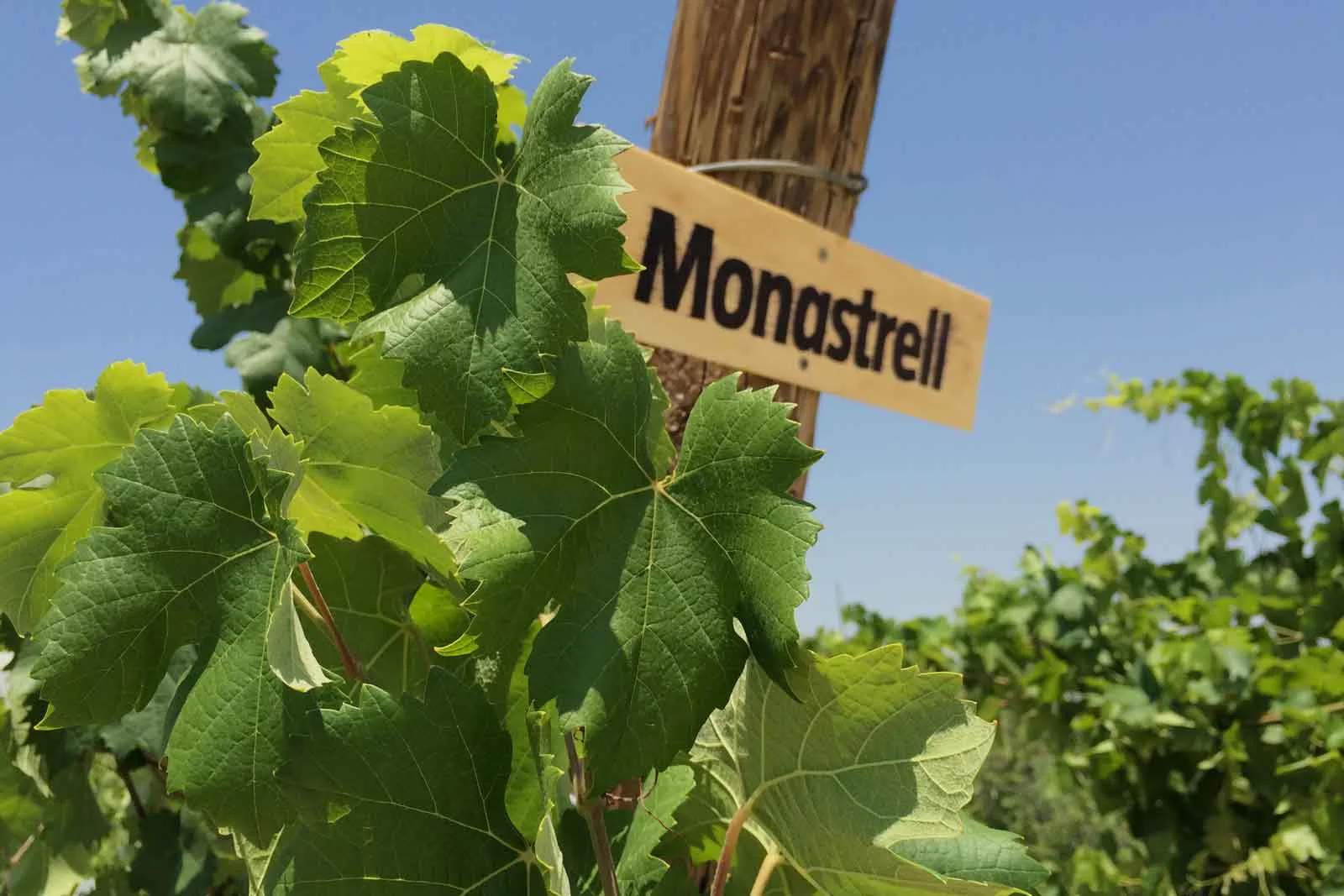
Jumilla the land of Monastrell
Jumilla is a wine-producing region located in the southeastern part of Spain, in the province of Murcia.
The region is known for its hot, dry climate and its unique terroir, which is characterized by its high-altitude vineyards and its limestone-rich soils.
The most important grape variety grown in Jumilla is Monastrell, which is believed to have been first brought to the region by the Phoenicians over 2,500 years ago.
Today, Monastrell is the backbone of the Jumilla wine industry, and it is used to produce a range of wines, from young, fruity reds to rich, complex wines that are aged in oak barrels.
The Jumilla wine region is also home to a number of historic wineries and vineyards, which offer visitors the opportunity to learn about the history and culture of the Jumilla wine industry.
Growth and cultivation practices
This grape variety is known for its hardiness and ability to withstand drought conditions, which makes it ideal for the dry terrains of its favored regions.
Monastrell vines typically bloom late but require a long growing season to fully ripen, necessitating warm temperatures through much of the year.
In terms of cultivation, farmers often emphasize low-yield, high-quality harvest techniques. These include careful pruning and sometimes old-vine preservation to harness the best expression of terroir in the grapes.
As a result, wines produced from monastrell grapes are noted for their depth, intensity, and aging potential.
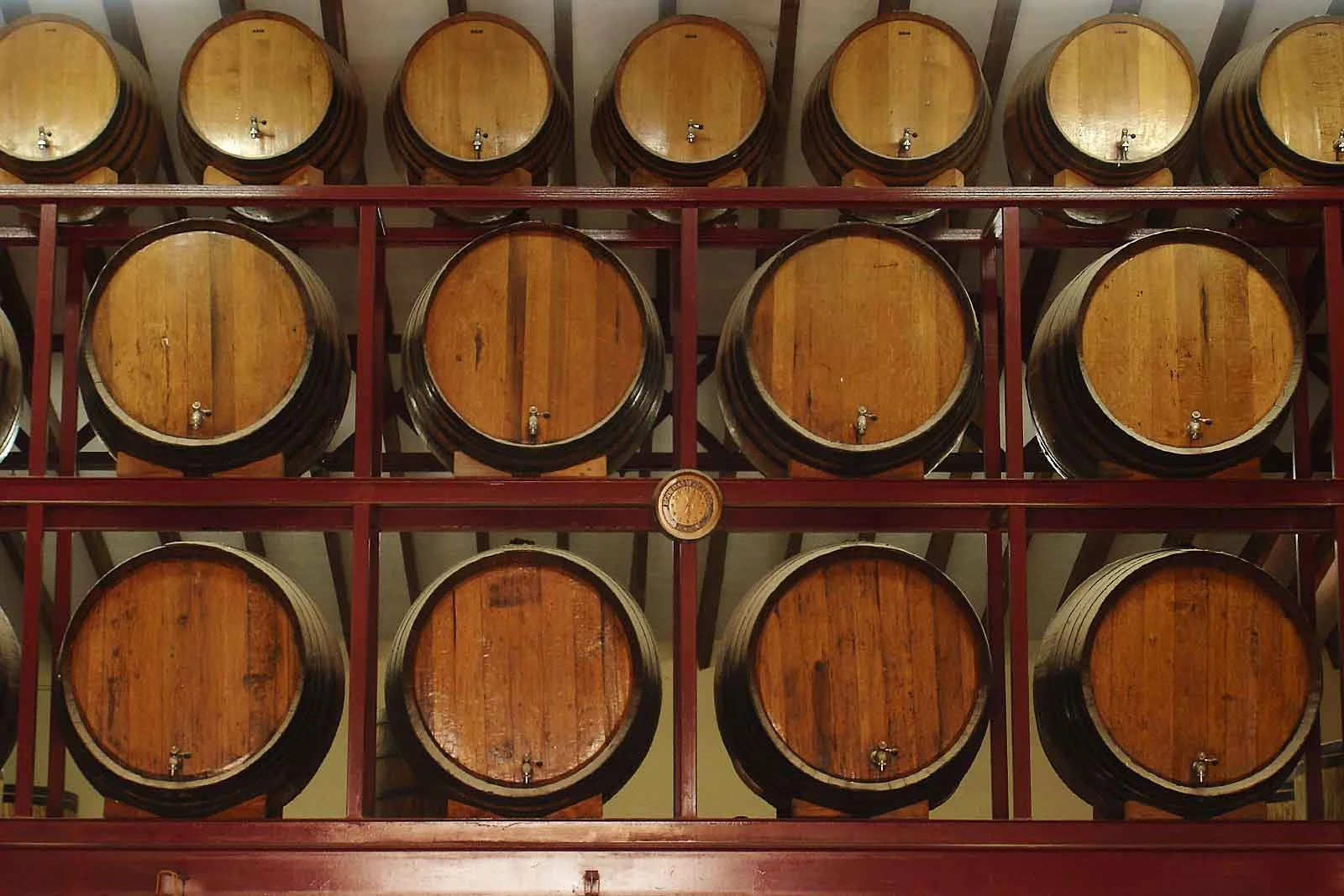
Monastrell beyond Spain: Global expansion
In France, particularly in regions like Provence and the Rhône, monastrell—referred under the name Mourvèdre—plays a crucial part in blends such as those used for Châteauneuf-du-Pape. Its characteristic structure and tannin profile provide excellent blending capabilities with other varieties like Grenache and Syrah.
The globalization of wine consumption in the 20th century saw monastrell vineyards taking root in new soils. Both Australia and the United States have embraced this variety, adapting it to their unique climates. In Australia, regions such as McLaren Vale and Barossa Valley utilize monastrell both as a single varietal wine and in splendid blends.
Similarly, in the United States, California’s warmer regions like Paso Robles and San Joaquin Valley have recognized the value this grape brings to their viticultural diversity.
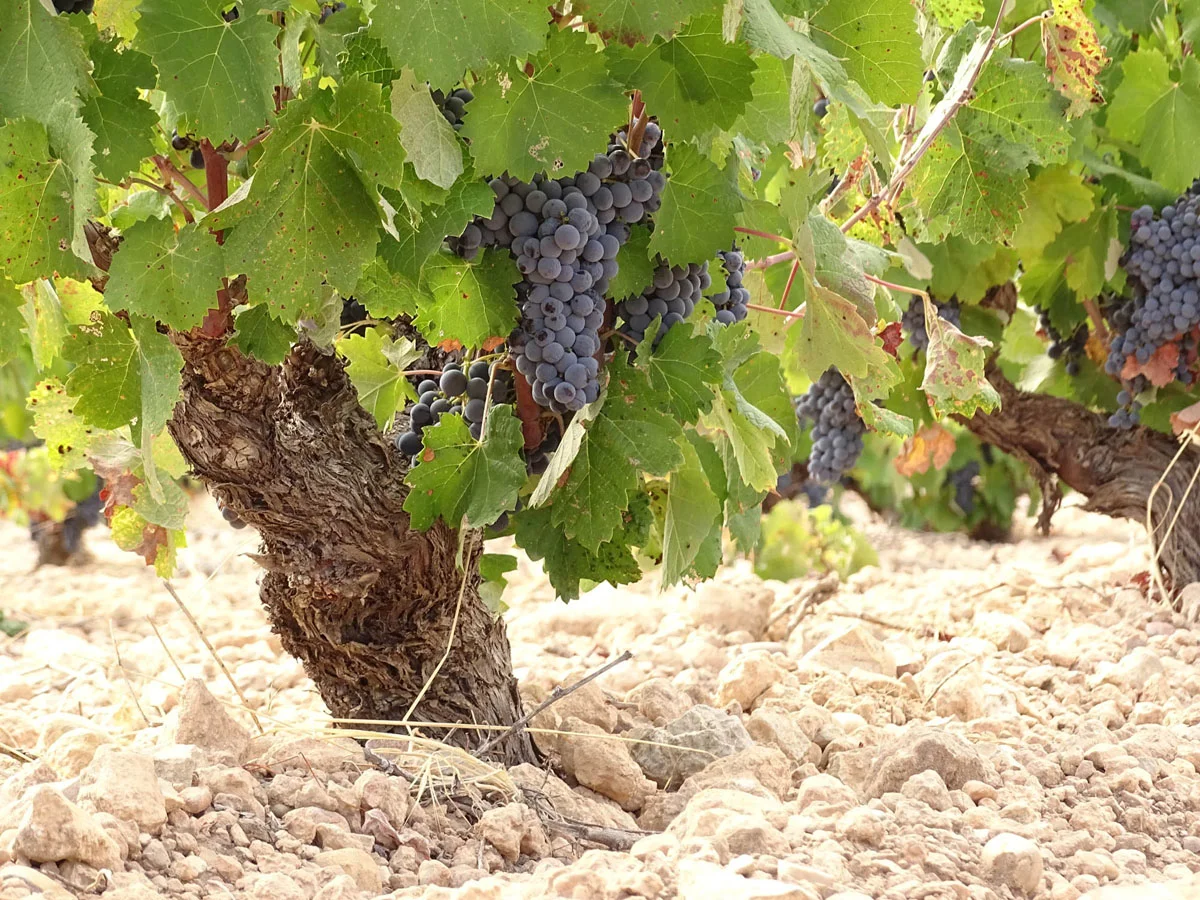
Characteristics and sensory profile
Monastrell wines are renowned for their rich, intense flavors and deep coloration.
But modern producers are now seeking more subtlety, freshness, and expression. They have moved from making warm and robust wines to more delicate ones.
Tasters often note profiles of dark fruit such as plums and blackberries, complemented by undertones of spice, meat, and leather.
This full-bodied wine makes it an excellent pairing with hearty meats, game, and earthy vegetables—a staple in rustic cuisine.
However, the same characteristics that endear monastrell to many also require careful management during the winemaking process.
The variety’s high tannin and alcohol content can overshadow its more subtle flavors if not balanced properly, demanding precision from vineyard to cellar.
Key features of the Monastrell grape variety :
| Feature | Description |
|---|---|
| Synonyms | Mourvèdre, Mataro, Morastell, Morrastrell |
| Color | Blue-black, medium-thick skin |
| Climate | Thrives in warm, dry climates |
| Disease Resistance | High resistance to drought, phylloxera |
| Harvest | Late ripening (September-October) |
| Wine Characteristics | Full-bodied, intense color, rich in black fruit, spice |
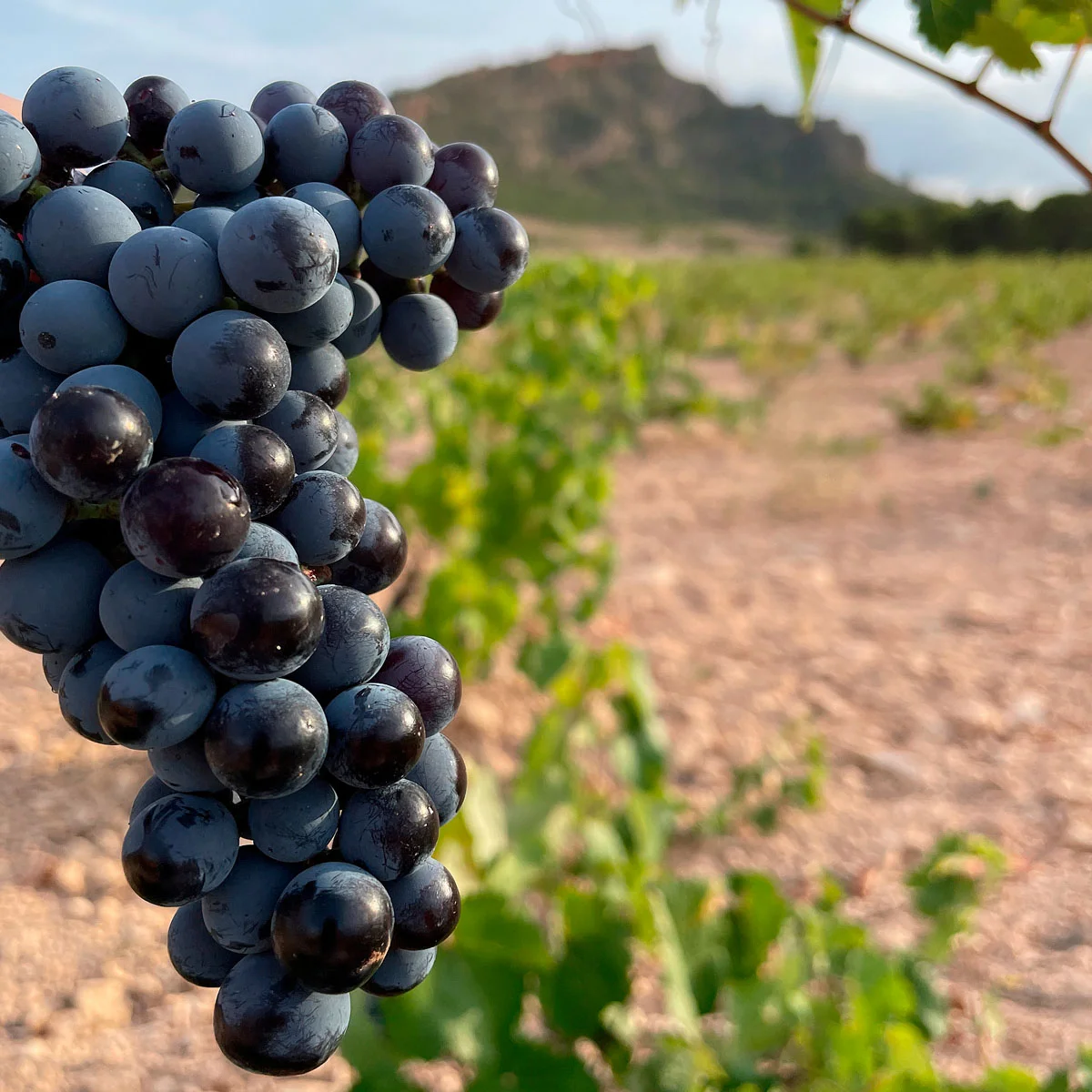
Modern trends and achievements in monastrell production
In recent decades, monastrell red wine has experienced a renaissance thanks to a wave of innovative winemakers who aim to highlight its distinct qualities.
Advances in viticultural technology and evolving climate patterns have opened new possibilities for optimizing grape quality while maintaining sustainable practices.
Organic and biodynamic farming methods are becoming increasingly prevalent amongst monastrell producers, emphasizing ecological responsibility alongside premium wine production.
Modern winemakers are experimenting with different aging protocols like amphoras, concrete or inox to refine the assertive flavors inherent to the grape.
There’s also a growing trend towards creating single-vineyard terroir driven monastrell wines that showcase the pure expression of the grape.
Each of these efforts reflects a broader commitment within the wine industry to adapt tradition to contemporary demands, ensuring monastrell remains relevant and cherished in the global wine scene.
Through such dynamic approaches, the historic wine continues to allure aficionados and casual drinkers alike with its compelling narrative woven in every sip
